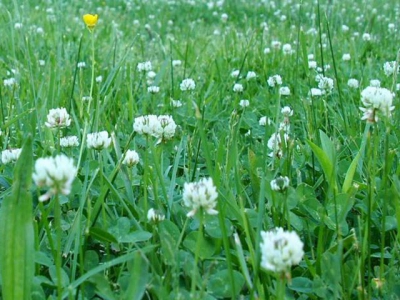Muddy pastures interfere with livestock grazing

Compression from tires and ruts from cattle or horse traffic can permanently damage pastures, and heavy rainfall can worsen that damage.
In the spring, livestock owners often begin to consider pasture management, but with so much rainfall so far this year, it’s more like mud management, according to an announcement from Clemson University in South Carolina.
“Mud management is a problem,” Clemson University Extension Service livestock agent Cassie LeMaster said. “The kind of trouble we’re seeing in our pastures this spring reminds us of the importance of putting solutions in place beforehand.”
Rain can’t be stopped, but there are some methods for managing the effects mud has on the pasture used for livestock grazing.
Nearly 100 horse and cattle owners attended a recent workshop hosted by Cassie LeMaster and fellow Clemson extension agent Chris LeMaster that covered some of those solutions.
“If your critters are walking belly deep in mud, they are not gaining weight, no matter how good the feed,” said Steve Higgins, director of environmental compliance at the University of Kentucky College of Agriculture and a guest speaker at the workshop.
“Livestock owners deal with lots of issues -- herd health, genetics, reproduction, handling facilities -- but those account for only about 30% of the cost of raising livestock,” he said. “The rest comes from environmental factors. The environment is important.”
Feed alone accounts for about half of the cost of producing livestock, so anything that interferes with growing grass can present a serious financial problem to animal owners, Higgins added.
“Soil nutrients have probably migrated because of all this rain,” Cassie LeMaster said. “You will want to take special care this year to assess your soil fertility.”
In the long run, the experts agree that building a containment system for feeding cattle and horses is the best option. Assuming that a cow eats three round bales per season — roughly 2% of her bodyweight daily — building a sheltered containment system for hay saves roughly $100 per animal, she said.
The three experts displayed a variety of types of feed containment systems tested by extension agricultural engineers and animal scientists that ranged from the inexpensive to the elaborate.
Of all the options to repair and protect a pasture, “the most expensive option is to do nothing,” Higgins said. “Your cattle are going to lose weight if you don’t address the problem. Whether you build a pad in feeding areas or not, you’re still paying for it. Mud needs to be addressed.”
Threats to soil and grass can come from a variety of sources, the extension specialists said. Compression from truck and tractor tires and ruts from cattle or horse traffic through the pasture can leave permanent damage. Heavy rainfall can make that damage worse.
“If you’re raising livestock on pastures, your most important product is grass,” Higgins said. “The quality and quantity of grasses dictate how many critters you can sustain on your farm, and if grass is your most important product, soil is your most important resource.”
Among the simplest and least expensive options is to re-examine the efficiency of the farm’s design. Higgins called it “material handling,” or just “moving stuff.”
“If you’re hauling hay or feed, how many times do you move it before it gets to the cow? Two tons of hay becomes six tons if you have to move it three times,” he noted.
Extension specialists recommend taking a fresh look at where people, animals and equipment go on the farm. The pressure per square inch of a cow’s hoof on the grass can be greater than that of a bulldozer, so minimizing traffic saves a lot of wear and tear.
“A poor layout is a source of constant loss,” Higgins said. “A good layout costs little or no more to produce than a poor one.”
Planning more efficiency into the farm will protect against some of the cost of restoration and repair. Simple solutions to weather events, such as penning up livestock after a soaking rain to allow the soil to percolate, can pay big dividends.
“It doesn’t have to be costly or complicated. You can achieve a lot with just the step point method, which has been around since the 1950s,” Chris LeMaster said. “Essentially walking and observing what touches your boot is a basic technique for pasture inventory and damage assessment.”
Source: Clemson University, which is solely responsible for the information provided and is wholly owned by the source. Informa Business Media and all its subsidiaries are not responsible for any of the content contained in this information asset.
Related news
 Cutting methane emissions in cattle
Cutting methane emissions in cattle Researchers from Mexico and Colombia examined the influence on methane production of including tannins and saponins in the diets of heifers.
 Beef production accounts for 3.3% of U.S. GHG emissions
Beef production accounts for 3.3% of U.S. GHG emissions The research team completed a comprehensive life-cycle analysis quantifying the resource use and various environmental emissions of beef cattle production
 Infrared tech may support cattle herd improvement
Infrared tech may support cattle herd improvement Science-driven system opens new doors for optimizing feed efficiency.